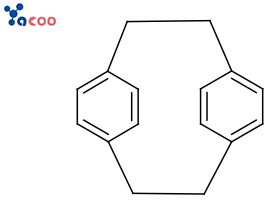Search Product
Structure Search
Search
Advantage Products
Location: Thematic focus
CAS: 1633-22-3| The Application of Parylene N in Medical device
Product Name:Parylene N
CAS:1633-22-3
Molecular Formula: C16H16
Article No.:D0015
Structural Formula:

Product Introduction
Parylene N is mainly used as a high-purity passivation layer and dielectric layer in microelectronics and semiconductors. It can also be used as passivation, protection, lubrication and other coatings in microelectronics; In addition, it can also be used as isolation, solidification, and reinforcement materials in biomedical anti-corrosion and cultural relic protection.
Application of Parylene N
In the medical field, implantable implants are used to support blood vessels in mammalian bodies, such as the urethra, esophagus, bile duct, intestine, arteries, veins, and peripheral blood vessels. For example, implantable implants can be used to support blood vessels in mammalian bodies that experience abnormal widening (such as aneurysms, vasoconstriction, or lesions such as stenosis or obstruction) or abnormal narrowing (such as stenosis). In some cases, brackets can be used. These types of prostheses can include frame structures such as stents, stent grafts, and covered stents. However, conventional stents, stent grafts, and covered stents may lack the ability to be clearly seen under fluorescence examination, which may hinder the placement of implantable implants. Therefore, there is a need for non radiative stents, stent grafts, and covered stents, as well as methods for producing non radiative stents, stent grafts, and covered stents. Therefore, the CN115315278B patent provides a scaffold graft with an opaque marker and its production method. The specific method for producing non radiative stent grafts is:
1. Process the outer surface of the basic scaffold graft to produce a functionalized surface;
2. Install a connecting layer on the functionalized surface;
3. Install an adhesive layer above the connecting layer;
4. Etching grooves in the adhesive layer to generate an etching layer;
5. Process the etching layer;
The adhesive layer includes one or more of Parylene C, ParyleneN, Parylene D, Parylene X, Parylene AF-4, Parylene SF, Parylene HT, Parylene F, Parylene CF, Parylene A or Parylene AM.
References
CN115315278B Stent grafts with opaque biomarkers and their production methods.












